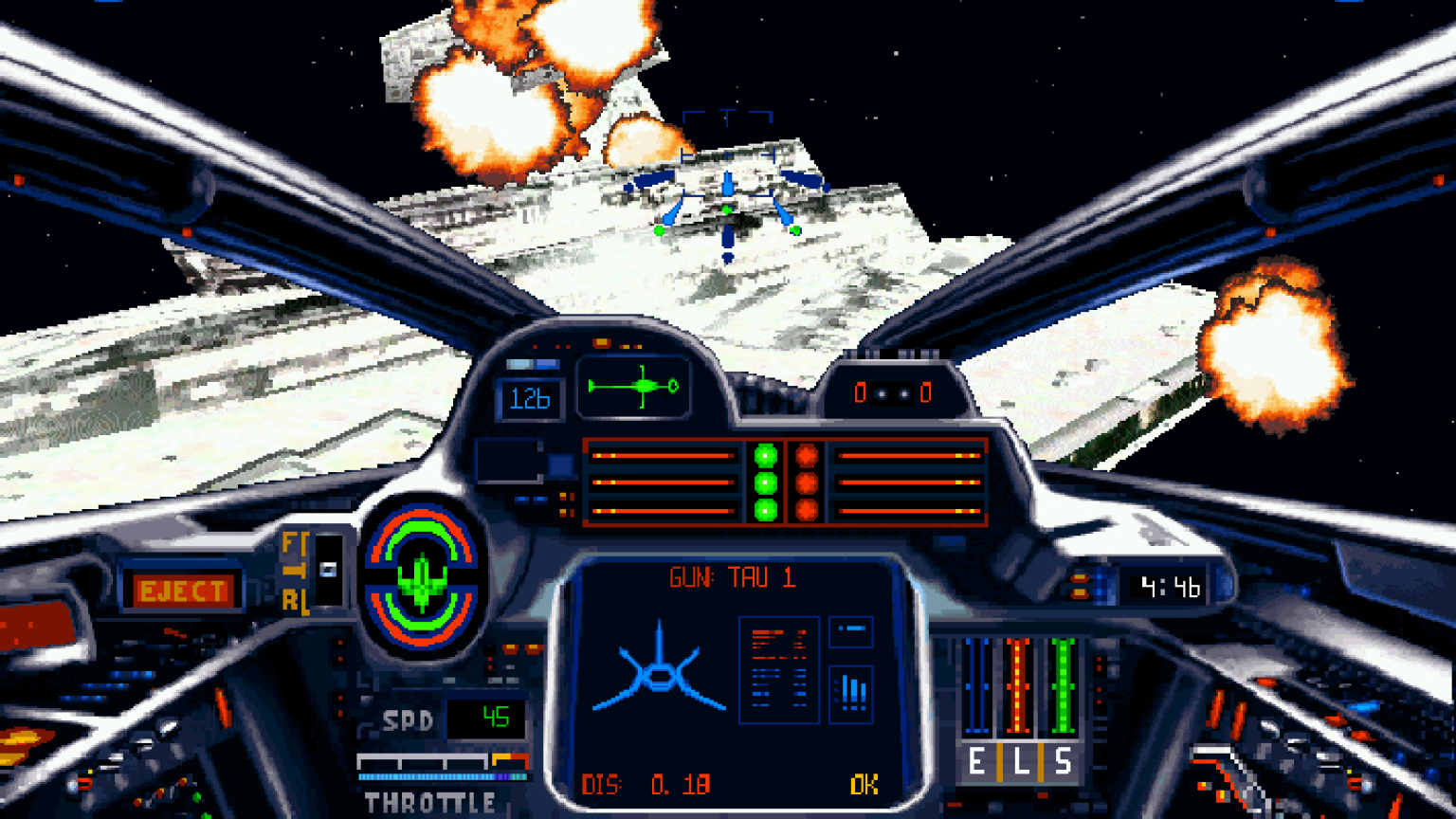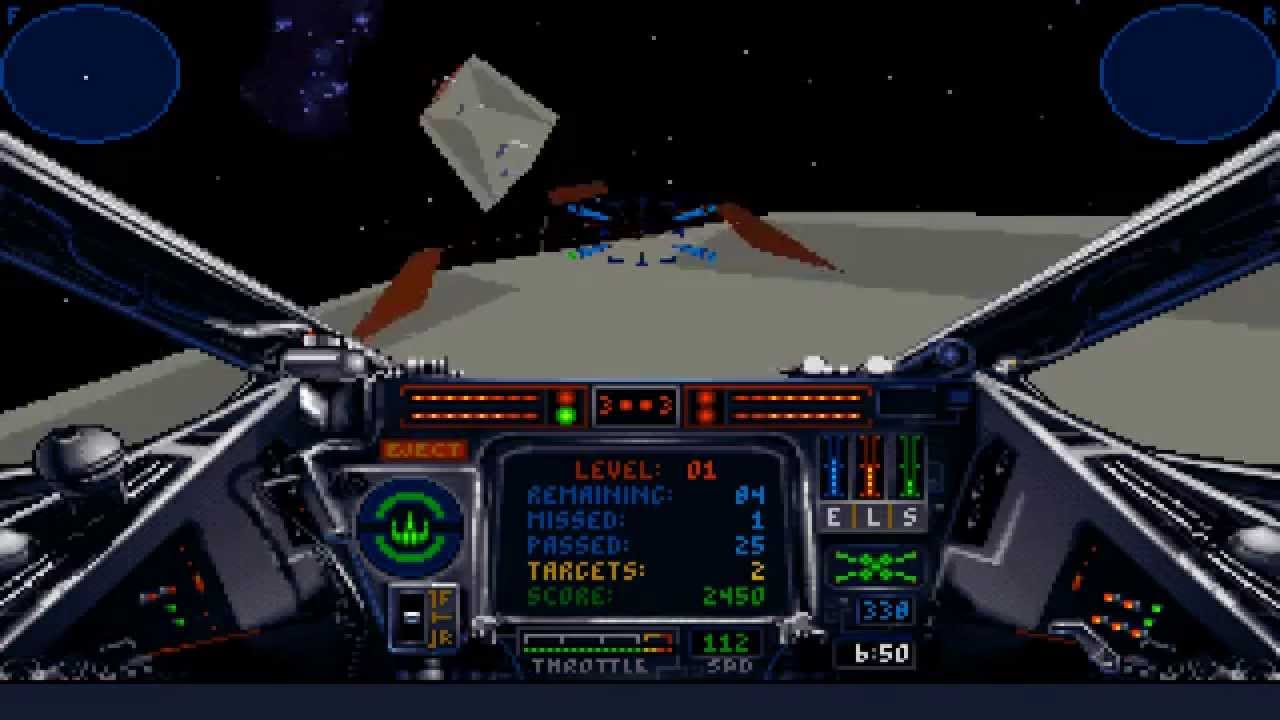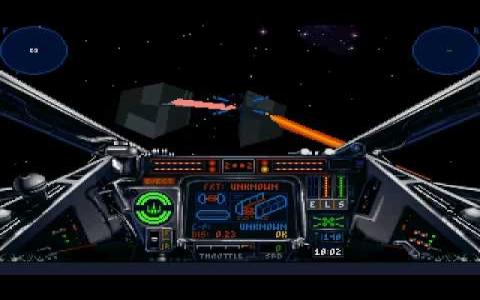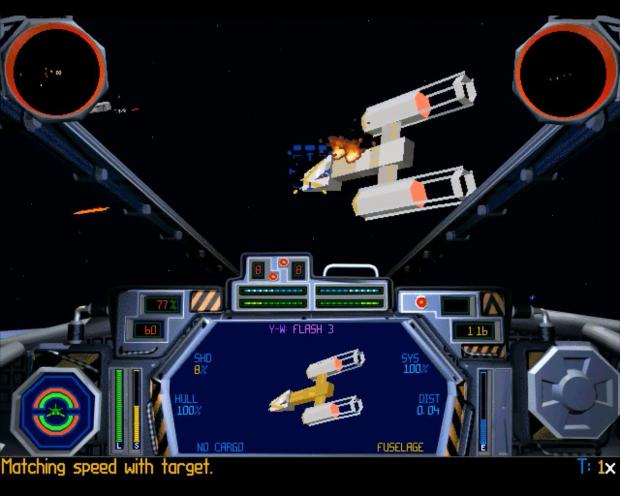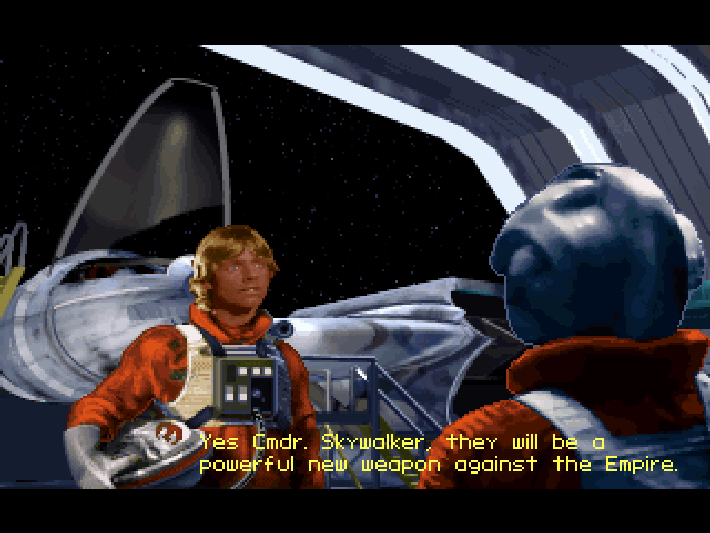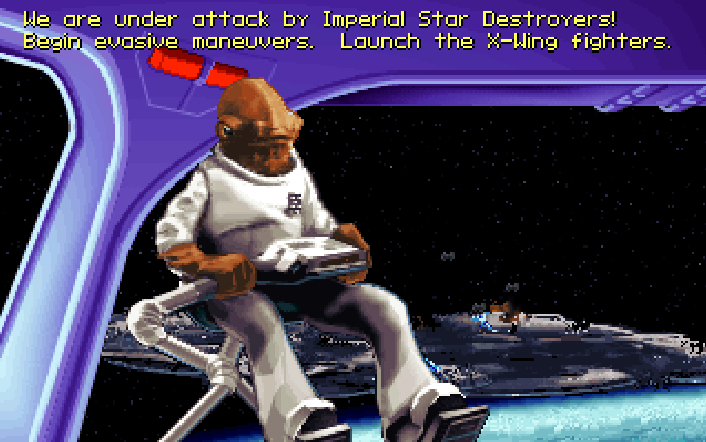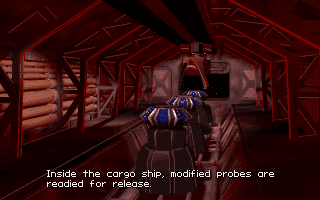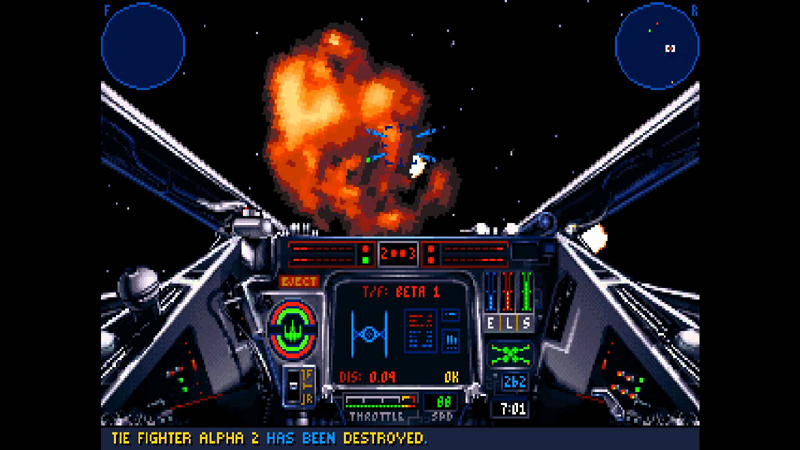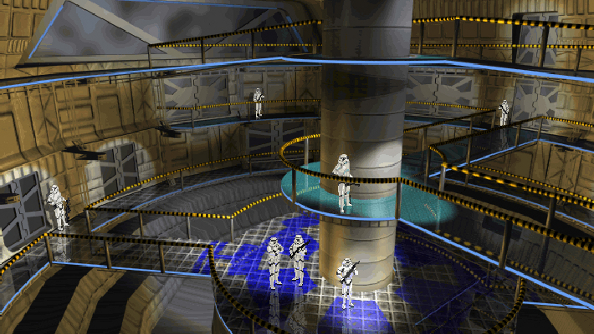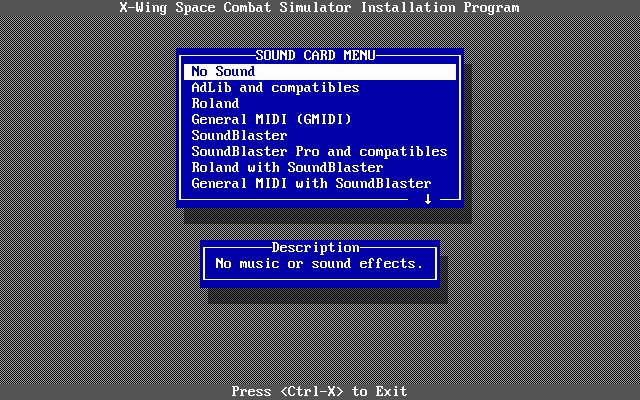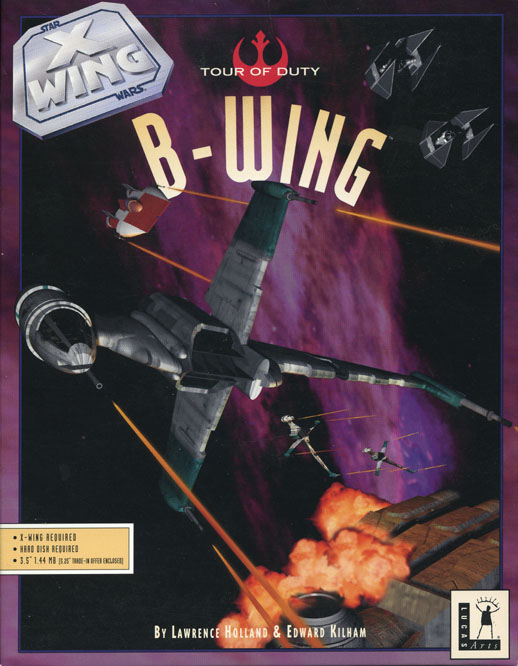 Star Wars: X-Wing
Star Wars: X-Wing
Released: 1993
Published by: LucasArts Entertainment Company LLC
Developed by: LucasArts Entertainment Company LLC
Author(s):
Lawrence Holland, Edward Kilham, Peter Lincroft, Martin Cameron, Wade Lady, Jon Knoles, James McLeod, Clint Bajakian, Robin Goldstein.
System Requirements
| System Requirements | 80386. 1 MB RAM required. DOS 3.3 or later. MCGA/VGA graphics supported. Audio support for Ad Lib, General MIDI, Roland MT-32 (or LAPC-I), Sound Blaster Pro. Analogue joystick optional (and recommended - FlightStick Pro and Thrustmaster FCS are supported). |
|---|---|
| Original Media | Six 5.25" 1.2 MB (HD) disks or five 3.5" 1.44 MB (HD) floppy disks. |
| Installed Size | 13 MB |
Introduction
Star Wars: X-Wing was the first LucasArts PC game set in the Star Wars(TM) universe. Lawrence Holland had previously written three World War II simulation titles for LucasFilm Games that had proved very popular: Battlehawks 1942, Their Finest Hour: The Battle of Britain, and Secret Weapons of the Luftwaffe. In fact, X-Wing used the same game engine as the latter.
From where can it be run?
The game must be installed to hard disk. For installation to your hard disk, run INSTALL.EXE from disk 1 of your media. Installation takes about 20 minutes.
To run the game, execute XWING.EXE with or without command-line options.
Game Audio/Video
OPL4 (General MIDI) + Sound Blaster  OPL3 (Ad Lib)  Roland MT-32 + Sound Blaster  |
It is believed the game music was written using a Roland LAPC-I or CM-32 that had an additional 33 sound effects over the MT-32. When run using an MT-32 "Old", the game will cause the "Buffer Overrun" message to appear on the MT-32's display, as it sends information to the Roland device too quickly for it to process. The version I would recommend playing is the original floppy disk release coupled with a Roland MT-32 "New", and of course, with the game configured to run with Roland MT-32 music and Sound Blaster for sound effects. The General MIDI audio in this game used poor approximation of instruments from the MT-32 tracks, so is generally considered a bad option to choose.
Copy Protection
X-Wing has manual-based copy protection. Upon starting the game you are presented with a screen where you register (create a user profile). The game will ask you to identify a ship by its codename. These can be found in the User manual at the bottom of each page, and consist of 3 symbols.
Some games have this copy protection removed, such that registering and going to the double doors on the right take you to the concourse directly without the need to look up a ship.
How to Setup
The game comes with a combined installation and configuration setup program called INSTALL.EXE, found on disk 1 of the floppy media. When executed you are presented with the following choices:
1) Initial warnings displayed if you don't have an EMS memory driver loaded:
2) Main menu:
3) Set Sound Board Configuration:
4) After selecting a sound card, if there's insufficient EMS memory to output digitized sound, you are presented with this warning dialog:
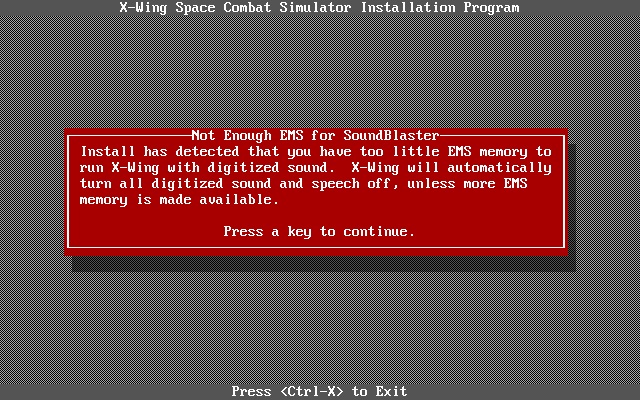
5) Select machine speed (it's usually best to not bother changing this from the recommended setting):
You can have the installer specify a drive letter other than C: to install onto by using a command-line argument for INSTALL.EXE, as follows:
A:INSTALL ON DRIVE D
To abort the installer and return to the command prompt, press CTRL-X and confirm by pressing 'Y'.
Memory Requirements
Star Wars: X-Wing requires EMS (Expanded Memory) 3.2 or higher. 256 KB of EMS is necessary for Sound Blaster audio. It will never use more than 896 KB of EMS so 2 MB of total memory is fine. As mentioned, the minimum installed memory is 1 MB. If low memory is detected in-game, it's normal for the game to disable digitized sound effects or even all sound and music, using the following rules:
| Main memory below 571,000 bytes and no EMS | X-Wing will not run |
| Main memory between 571,000 bytes and 602,000 bytes | All sound and music is disabled |
| Main memory above 602,000 bytes, EMS below 64K | Digitized speech and sound effects are disabled |
| Main memory > 543,000 bytes, EMS between 80 KB and 256 KB | Digitized speech and sound effects are disabled |
| Main memory above 563,000 bytes and EMS is 256 KB+ | All audio features enabled |
| Main memory between 543,000 bytes and 563,000 bytes, EMS is 256 KB+ | Digitized speech and sound effects are disabled always. Music is disabled during flight. |
The game also requires a minimum of 558 KB of base memory free, and it recommends 588 KB free.
Expansion Packs
Star Wars: X-Wing got two expansion packs, also released in 1993. They were:
The Imperial Pursuit expansion pack added 20 new missions in this 'Tour of Duty', split into 3 stages:
Stage 1 (missions 1-5): Rebel Alliance flees Yavin in order to avoid the Empire's retribution for the destruction of the Death Star. During, this they lose most of their food supplies.
Stage 2 (missions 6-14): The Rebels struggle to find food, but make a deal with Overlord Ghorin for the vital supplies, but it's a double-cross.
Stage 3 (missions 15-20): The Rebels steal TIE Advanced to study its capabilities, and go back on the offensive against the Empire's ships and dockyards.
The B-Wing expansion pack added 20 new missions, again split into 3 stages:
Stage 1 (missions 1-8): The Rebels are forging a new alliance with the Habbassa. Using their new B-Wing starfighter, they liberate Habbassan prisoners.
Stage 2 (missions 9-14): The Rebels prepare to escape the Imperial fleet that are chasing them.
Stage 3 (missions 15-20): The Rebels need to disappear from the Empire's radar before they can regroup on Hoth.
To Quit the Game
Press ESC at any time and choose "Exit to DOS".
Supporting Documents
Here are the original documents that came with the game:
Save Games
Your user profile is stored in a file in the main game directory called <registration>.PLT, where <registration> is the name of the pilot you registered at the start of the game. The file is not text-readable.
Versions of the game known to exist
| Version | Date | Comments |
|---|---|---|
| DOS | Late 1992 | Slideshow of the alpha version of X-Wing |
| DOS | Early 1993 | Pre-release Cutscene demo - introduction only. |
| DOS | 1993 | The first DOS release on floppy disk. Has LucasArts' iMUSE music engine which dynamically and fluidly changes the music you hear based on the in-game circumstances. Includes both MT-32 and General MIDI tracks. The GM instruments chosen were poor approximations of what the MT-32 instruments sound like, so this release has by far the best music when run with MT-32 mode. |
| Windows 95/98 | 1994 | Collector's CD-ROM Edition - includes a new game engine used in the later TIE Fighter with support for Gouraud shading. It also includes voiceovers for several characters in the game during the briefings. This edition includes both Imperial Pursuit and B-Wing expansion packs. Unfortunately, this CD-ROM version of the game only included General MIDI tracks, omitting the MT-32 ones that were better quality and more rich. If you select "MT-32" in the audio setup options, it will play the GM tracks. |
| Windows 95/98 | 1998 | Collectors Series release. Further enhanced graphics due to an upgrade to the X-Wing vs TIE Fighter engine, this includes 3D support (Direct3D), use of proper textures instead of Gouraud shading, and redone concourse graphics. iMUSE sound system has sadly been replaced with CD audio tracks. This version requires a joystick or gamepad to play the game, whereas older versions did not. Also, X-Wing models were imported from X-Wing vs TIE Fighter, which don't look as good as the original. They also removed the launch and landing cutscenes and the pilot select feature. |
